mobile Ansicht, to the English Version tap the flag
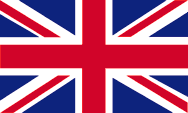

- Autonome Region Spaniens
- bis 1715 als Grafschaft Barcelona Teil der vereinigten Krone von Aragon
- Eigenbezeichnungen:
– Katalanisch: Catalunya
– Aranesisch: Catalonha
– Spanisch: Cataluña
• Flagge
• historische und andere Flaggen
• Bedeutung/Ursprung der Flagge
• Wappen
• historische Wappen
• Bedeutung/Ursprung des Wappens
• Landkarte der autonomen Regionen Spaniens
• Landkarte der historischen Königreiche auf der Iberischen Halbinsel
• Zahlen und Fakten
• Geschichte
• Ursprung des Landesnamens
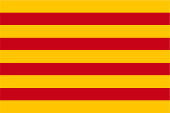
seit 1977,
Flagge von Katalonien,
Seitenverhältnis = 2:3,
Quelle, nach: Flags of the World






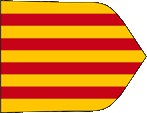
875–14. Jhd./century,
Flagge der Grafschaft Barcelona,
Quelle, nach: Wikipedia (FR)




14.–16. Jhd./century,
Flagge der Grafschaft Barcelona,
Quelle, nach: Wikipedia (FR)






1933–1935,
Flagge von Katalonien,
Quelle, nach: Wikipedia (ES)





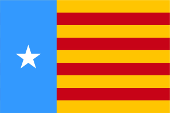
1933–1935,
Flagge von Katalonien,
Seitenverhältnis = 2:3,
Quelle, nach: Flags of the World



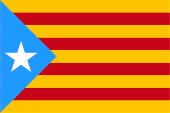
1933–1935,
Flagge von Katalonien,
Variante,
Seitenverhältnis = 2:3,
Quelle, nach: World Statesmen



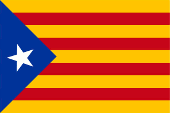
Flagge der Unabhängigkeitsbewegung,
Seitenverhältnis = 2:3,
Quelle, nach: Wikipedia (DE)




Flagge der Unabhängigkeitsbewegung,
Seitenverhältnis = 2:3,
Quelle, nach: Wikipedia (DE)




Die heutige Flagge Kataloniens wurde am 18.12.1979 offiziell wieder eingeführt. Sie wird Senyera genannt und zeigt vier horizontale rote Streifen auf goldenem Grund. Es ist eine typische Wappenflagge, die durch Drehung und Befestigung des Wappenbildes an einem Flaggstock entstanden ist. König Ramiro II. von Aragón setzte vor seinem Tod im Jahre 1137 seine neugeborene Tochter Petronella als Erbin ein, die im Jahre 1150 Raimund Berengar IV., den Grafen von Barcelona (Katalonien) heiratete. So entstand die vereinigte Krone von Aragonien unter dem Wappen von Raimund Berengar IV., die 1228–1232 um die Balearen und um 1238 noch um die Grafschaft Valencia erweitert wurde. Für die vereinigte Krone von Aragonien wird die sehr einprägsame Flagge der Grafschaft Barcelona/Fürstentum Katalonien übernommen, die – wie deren Wappen – vier senkrechte rote Balken auf goldenem Grund zeigt. Die vereinigte Krone von Aragonien wurde im Jahre 1715 aufgelöst, Katalonien wurde spanische Provinz, blieb jedoch die nominelle Grafschaft Barcelona. In der Spanischen Republik (ab 1931), wurde am 21.09.1932 eine Autonome Region Katalonien gegründet, welche die Senyera am 25.05.1933 offiziell wieder annahm. In der Zwischenzeit hatten aber bereits inoffizielle Varianten der Flagge verwendet, die am Mast zusätzlich ein hellblaues Dreieck oder einen hellblauen Balken mit einem weißen fünfzackigen Stern darin zeigten. Die Autonomie war dann 1935 wieder abgeschafft worden, allerdings durfte das Parlament ab 1936 wieder eingeschränkt werden um eine neue Regierung zu bilden, die jetzt wahrscheinlich/vermutlich die vorher inoffizielle Variante mit dem hellblauen Balken und dem weißen fünfzackigen Stern darin verwendete. Die Senyera war zwischen 1939 und 1975 unter der Regentschaft des spanisch-nationalistischen General Franco verboten. Politische und kulturelle Gruppen der Neuzeit, welche die Identität von Katalonien erhalten und fördern wollen, oder gar die Unabhängigkeit des Landes wünschen, verwenden die Flagge Kataloniens meist ergänzt um ein blaues Dreieck am Mast mit einem weißen fünfzackigen Stern in der Mitte, "Estelada Blava" genannt. Es gibt aber auch eine Variante mit einem gelben Dreieck am Mast und einem roten Stern, "Estelada Groga" genannt, die von linken Nationalisten verwendet wird.
Quelle:
Wikipedia (ES),
Flags of the World,
Volker Preuß


seit 1977,
Wappen von Katalonien,
Quelle, nach: Xavi Garcia, CC BY-SA 3.0, via Wikimedia Commons


ab ca. 12. Jahrhundert,
Wappen der Grafen von Barcelona,
Quelle, nach:
Wikipedia (DE)

Das heutige Wappen von Katalonien wurde, wie die Flagge, im, Zusammenhang mit der Errichtung der Autonomen Gemeinschaft Katalonien am 29.09.1977 offiziell wieder eingeführt, es zeigt vier rote Balken auf goldenem Grund, darüber eine Königskrone. Das Schild ist das Wappen der Grafschaft Barcelona und der späteren vereinigten Krone von Aragonien 1150. König Ramiro II. von Aragón setzte vor seinem Tod im Jahre 1137 seine neugeborene Tochter Petronella als Erbin ein, die im Jahre 1150 Raimund Berengar IV., den Grafen von Barcelona (Katalonien) heiratete. So entstand die vereinigte Krone von Aragonien unter dem Wappen von Raimund Berengar IV., die 1228–1232 um die Balearen und um 1238 noch um die Grafschaft Valencia erweitert wurde. Das Wappen der Grafschaft Barcelona wurde eine Legende folgend um 875 durch den westfränkischen König Karl der Kahle an den Wilfried den Behaarten (Guifré el Pilós), den Grafen von Barcelona verliehen, weil er beim Kampf gegen die Mauren (Araber) Tapferkeit gezeigt hatte. Die Legende berichtet das ein Kämpfer die vier blutenden Finger seiner Hand durch das bis dahin gültige Wappen des Grafen zog. Graf Raimund Berengar III. von Barcelona hat jedoch um das Jahr 1100 eine völlig andere Interpretation seines Wappens aufzeichnen lassen, die folgendes überliefert: Das Wappen ist rot und zeigt drei goldene Balken. Sie stehen für die drei Säulen der Macht in der Grafschaft Barcelona, nämlich Barcelona selbst, die Herrschaft Besalú und die Herrschaft Provenca. Möglicherweise geht die ab 1263 von Aragonien angeblich verwendete Marineflagge auf diese Interpretation zurück. Die Farben Rot und Gold gehen angeblich auf den Einfluss des Papstes zurück, denn das alte Königreich Aragon und die Grafschaft Barcelona waren Lehen des Heiligen Stuhls, und verwendeten deshalb die Farben der Stadt Rom.
Quelle: Wikipedia (ES),
Wikipedia (CA),
Volker Preuß

Die autonomen Regionen Spaniens:
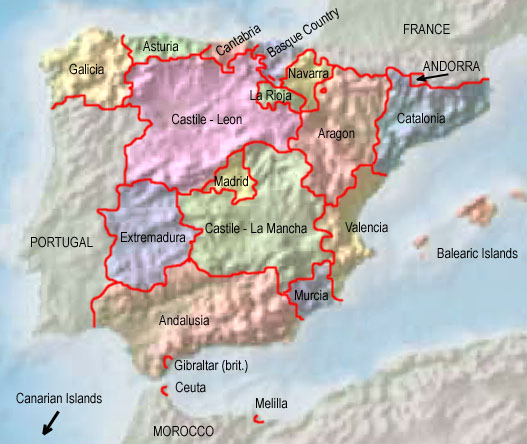
Quelle/Source: Freeware, University of Texas Libraries, modyfied by: Volker Preuß

Karte der historischen Königreiche auf der Iberischen Halbinsel (ca. 1220):
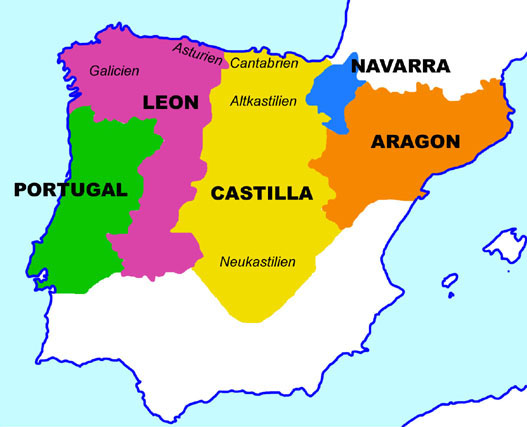
Landkarte/Map: Volker Preuß

Fläche: 32.091 km²
Einwohner: 7.792.611 (2022), davon ca. 40% Katalanen, ca. 55% Kastilier und Katalanische Kastilier, 0,1% Aranesen
Bevölkerungsdichte: 243 Ew./km²
Hauptstadt: Barcelona, 1.636.193 Ew. (2022)
Amtssprachen: Spanisch (Kastilisch), Katalanisch, Aranesisch
Währung: spanische (Euro-)Währung
Zeitzone: MEZ
Quelle: Wikipedia (DE)

Frühzeit · Besiedlung durch Iberer
ca. 600 v.Chr. · Einwanderung von Kelten, Vermischung mit den Iberern, Herausbildung der Keltiberer
218–201 v.Chr. · Zweiter Punischer Krieg, das Römische Reich erwirbt die Besitzungen Karthagos in Iberien, Unterwerfung der ganzen Iberischen Halbinsel bis zum Jahre 19 v.Chr.
217 v.Chr. · das heutige Katalonien kommt zur römischen Provinz Hispania Tarraconensis, römische Besiedlung, Romanisierung
ca. 400 n.Chr. · Völkerwanderung, Durchzug von Alanen, germanischen Sweben und Westgoten, ein Teil der Alanen siedelt im Pyrenäenvorland
415 · zum Westgotenreich
711–714 · Vernichtung des Westgotenreichs durch von Nordafrika kommende Araber
714 · die Araber erobern Katalonien
778 · das Frankenreich unter Karl dem Großen erobert Katalonien, Errichtung der Spanischen Mark im Pyrenäenvorland, jedoch Niederlage gegen die Basken im Tal von Ronceval
795–812 · Wiedererrichtung der Spanischen Mark durch Karl den Großen und Ludwig den Frommen, dem Sohn von Karl dem Großen
ca.820–ca.880 · Krise des Frankenreichs nach dem Tod von Karl dem Großen, Aufteilung des Reiches, Erbfolgestreitigkeiten, in der Spanischen Mark werden die fränkischen Markgrafen vertrieben und durch gewählte lokale Dynastien ersetzt, in Katalonien vereinigt Graf Wilfried der Behaarte (Guifré el Pilós) die Grafschaften Urgell, Cerdanya, Barcelona und Girona und begründet die Dynastie der Grafen von Barcelona, die sich allmählich vom Fränkischen Reich unabhängig machen
1137 · Ramiro II., König von Aragonien, verlobt seine Tochter Pedronella mit Raimund Berengar IV., dem Grafen von Barcelona
1150 · Hochzeit von Pedronella und Raimund Berengar
1162 · Alfons II., Sohn von Raimund Berengar wird Graf von Barcelona
1163 · Alfons II. wird König von Aragonien (damit Vereinigung von Aragonien und Katalonien)
1172 · Aragonien erwibt die Grafschaft Roussillon und die Cerdagne (zeitweise auch Montpellier und Carcassonne)
1196–1213 · Herrschaft von König Pedro II.
1213–1276 · Herrschaft von König Jakob I.
1228–1232 · Aragonien erwibt die Balearen
1238 · Befreiung von Valencia von den Moslems
1248 · Befreiung von Alicante von den Moslems
1276–1285 · Herrschaft von König Peter III.
1282 · Aragonien erwibt Sizilien („Sizilianische Vesper”, Vertreibung der Anjou aus Palermo), Krieg mit Frankreich
1283 · Steuererhöhung, die Stände von Aragonien erzwingen vom König das Generalprivilegium von Saragossa
1285–1291 · Herrschaft von König Alfons III., Kriege mit Kastilien und Frankreich, die Stände werden stärker
1291–1327 · Herrschaft von König Jakob II., dem Bruder von Alfons III.
1326 · Aragonien erwibt Sardinien
1319 · die Unteilbarkeit des Reiches (Erbteilung) wird gesetzlich festgeschrieben, weiterhin eigene Ständeversammlungen (Cortes) in Katalonien und Valencia
1327–1336 · Herrschaft von König Alfons IV., dem Sohn von Jakob II., Kriege im Bündnis mit Kastilien gegen Genua und die Araber
1336–1387 · Herrschaft von König Peter IV., dem Sohn von Alfons IV., Ende des Krieges gegen Genua, teilweiser Verlust von Sardinien, Krieg gegen Kastilien, Bruderkrieg gegen die anderen Söhne von Alfons IV., die Stände werden stärker
1387–1395 · Herrschaft von König Johann, dem Sohn von Peter IV., Verlust von Sardinien
1410 · Tod von König Martin, dem Bruder von Johann, Aussterben der Dynastie Ramiros von Navarra
1410–1412 · Thronstreitigkeiten, per Schiedsspruch wird Ferdinand I. von Kastilien, ein Neffe von König Johann, König von Aragonien
1412–1416 · Herrschaft von König Ferdinand I.
1416–1458 · Herrschaft von König Alfons V., dem Sohn von Ferdinand I., Regentschaft durch seine Gemahlin Maria von Kastilien und seinem Bruder Johann, Alfons V. erobert das Königreich Neapel (1442) vom Haus Anjou und vereinigt Neapel und Sizilien mit Aragonien, Konflikte mit Frankreich
1458 · Tod von Alfons V., sein Sohn Ferdinand wird König in Neapel, sein Bruder Johann II. wird König von Aragonien (verheiratet mit Blanka von Navarra, somit auch König von Navarra, Abtretung des Roussillon an Frankreich
1479 · Tod von König Johann II., Nachfolger wird sein Sohn Ferdinand II.
1469 · Heirat von Isabella I., Königin von Kastilien-León und Ferdinand II., dem Prinzen und Thronfolger von Aragonien
1479 · Krönung von Ferdinand II. und Isabella I. zu Königen von Spanien
1516 · offizielle Vereinigung von Aragonien und Kastilien, Aragonien behält jedoch wichtige Privilegien
1609 · König Philipp III. von Spanien verweist die letzten Moslems (Morisken) des Landes
1701–1714 · Spanischer Erbfolgekrieg, Aragonien ergreift für Östrereich Partei, nach der Niederlage Verlust der Privilegien, Ende des selbstständigen Königtums der Vereinigten Krone von Aragonien, Katalonien, die Balearen und Valencia werden ausgegliedert, Aragonien (in seinen heutigen Grenzen), und Valencia behalten nominell den Titel eines Königreichs, Katalonien wird nominelles Fürstentum Barcelona
1808–1813 · Katalonien ist durch französische Truppen besetzt
1833 · die bis dato in Spanien bestehenden Teilkönigreiche und Regionen werden in Provinzen aufgeteilt, das Fürstentum Barcelona in die Provinzen Lérida, Gerona, Barcelona und Tarragona
1931 · Autonomiestatut für Katalonien
1936–1939 · Spanischer Bürgerkrieg, in Katalonien hält sich bis 1938 eine "Anarchistenrepublik" bis zur Zerschlagung durch die sozialistischen Regierungstruppen, ab 1938/1939 unter Kontrolle der Franco-Truppen, Ende der Autonomie
29.09.1977 · Katalonien erhält das Autonomiestatut innerhalb Spaniens (unter Zusammenfassung der Provinzen Lérida, Gerona, Barcelona und Tarragona), Gründung der "Autonomen Gemeinschaft Katalonien"
2006 · Neufassung des Autonomiestatuts, Vergrößerung der Autonomierechte von Katalonien
27.10.2017 · das Parlament von Katalonien erklärt nach einer Volksabstimmung die Unabhängkeit Kataloniens von Spanien, die Zentralregierung in Madrid entmachtet die Regionalregierung und ordnet Neuwahlen für Katalonien an
Quelle:
Wikipedia (ES),
World Statesmen,
RetroBib Retrobibliothek,
Volker Preuß

Der Name "Katalonien" geht auf die hier siedelnden "Katalanen" zurück. Die Bezeichnung "Katalanen" entstand, als sich im 5. Jahrhundert die hier lebenden Alanen mit den Goten zu den "Got-Alanen" vermischten.
Quelle: Die Völker der Erde


![]()
































